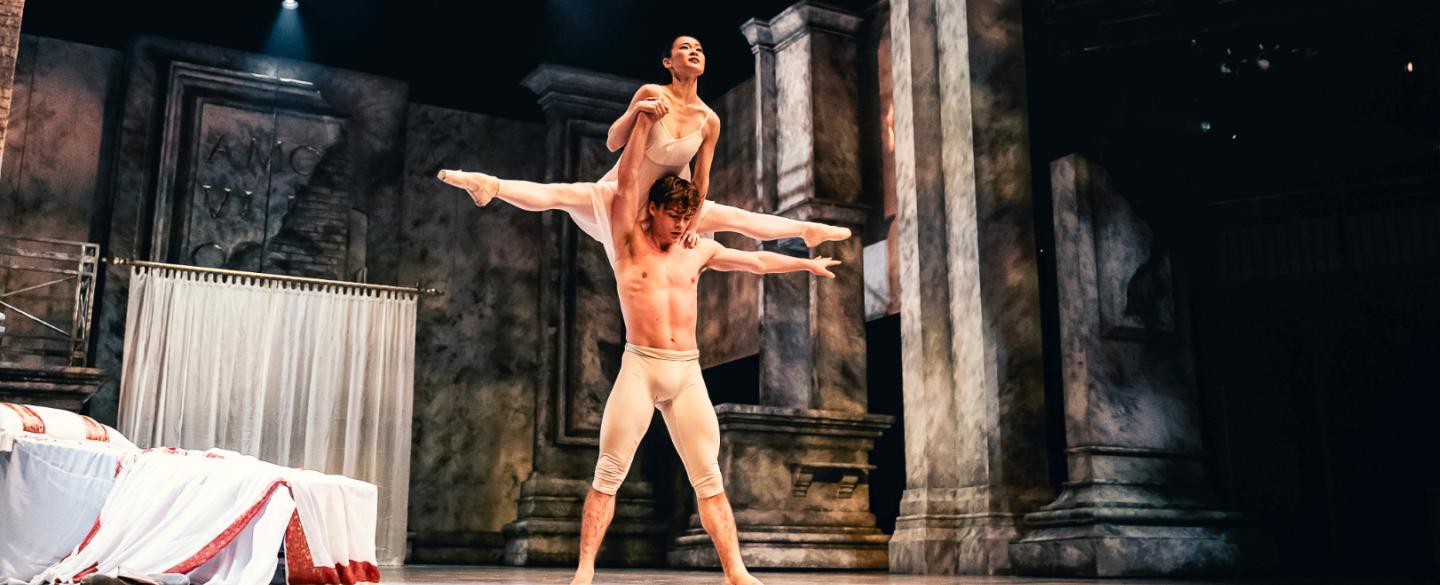

With our production of Romeo & Juliet returning to Leeds, this time on the Leeds Playhouse stage, we asked Company dancers Saeka Shirai and Harris Beattie some of the most asked questions about taking on the iconic roles of Romeo and Juliet.
Harris Beattie on becoming Romeo:
For me personally, understanding the context of my character is essential. Studying Shakespeare’s original play helped inform every movement, gesture, and expression on stage.
It would have to be the balcony pas de deux in Act I. The movement is so emotive, and paired with Prokofiev’s beautiful score, it just feels completely alive. It’s such an incredibly powerful moment.
It’s a lot of fun! It’s not something we often get to do in ballet, so it brings a unique energy to the performance. Of course, safety is our top priority. We rehearse the sword fights extensively to ensure everything is precisely timed. Before every performance, we even do a short rehearsal with the swords to refresh our muscle memory and make sure we’re completely in sync.
We begin rehearsals several weeks in advance. Since many of us have performed this ballet before, that familiarity helps, but we still dedicate significant time to refining the choreography and the storytelling.
I don’t have a strict ritual, but I do like to take time to clear my head, go through the choreography mentally, and reconnect with the emotional journey of the character. It helps me get fully into the mindset and presence needed for the performance.
Audiences can expect to be swept away by one of the most iconic love stories of all time. This ballet brings to life a world filled with love, tragedy, and even moments of humour.
Saeka Shirai on becoming Juliet:
I read the book and watched the film on my own when I was young so I had a rough idea, but at the beginning of the season last year, Sir Gregory Doran who is the former Artistic Director of the Royal Shakespeare Company came to assist us, and I felt I could understand more deeply who Juliet is.
What do you think is different about Northern Ballet's production of Romeo & Juliet?
I feel more connected to the audience in this version. It makes me feel like I am in the story when I watch it. Especially, the end of Act II which is a very unexpected ending.
Do you have a favourite memory of dancing Juliet so far?
It was very special memory and an honour to be able to dance Juliet at the Royal Shakespeare Theatre.
I feel like everything about this ballet builds towards each scene so naturally. The sets, music, choreography, atmosphere and emotion everything comes together.
I think the best part is we are able to express by using our full body and the hardest thing is finding a balance between people’s visions and my visions.
My favourite moment is when Juliet makes the decision. It’s very lonely but very powerful at the same time.
Romeo & Juliet will be back on stage at Leeds Playhouse 18 – 21 June.
Photos Emily Nuttall